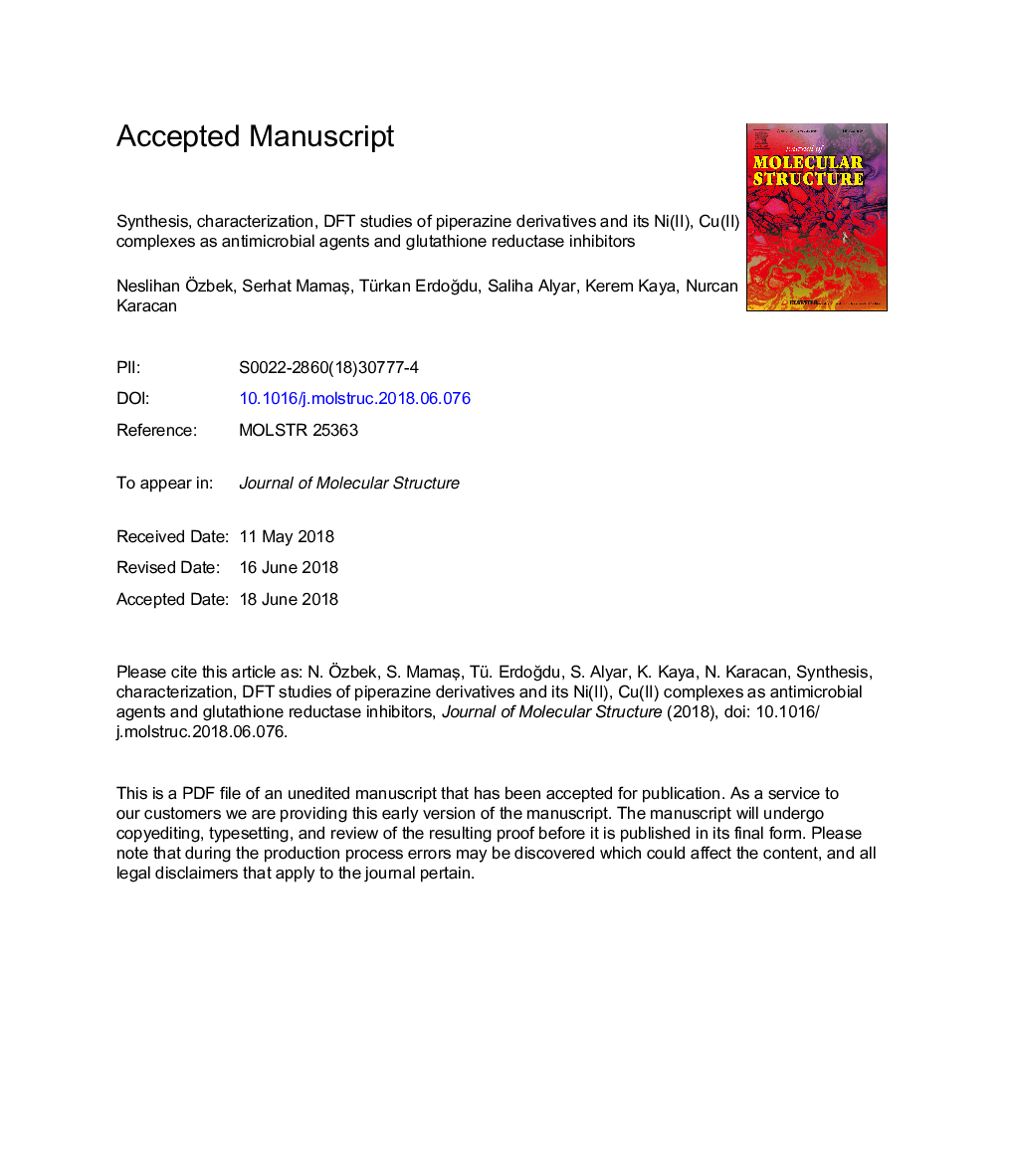| Article ID | Journal | Published Year | Pages | File Type |
|---|---|---|---|---|
| 7807005 | Journal of Molecular Structure | 2018 | 33 Pages |
Abstract
1,4-Piperazinediacetic acid and 1,4-diethyl ester (1) were prepared by treating 1,4-piperazine with ethylchloroacetate; and its structure was identified by single crystal X-ray diffraction analysis. Then, 1,4-piperazinediacetic acid, 1,4-dihydrazide (2) and its metal complexes (2-Ni(II) and 2-Cu(II)) were synthesized, respectively. Their structures were characterized by elemental analysis, ESI-MS, IR and NMR spectral data. The electrochemical behavior of compounds was investigated using cyclic voltammetry (CV). The density functional theory (DFT) was used for geometry optimization, HOMO and LUMO energies, HOMO-LUMO energy gap and dipole moment of the compounds. It has been observed that the calculated band gaps for complexes are much smaller than ligands. Furthermore,13C and1H NMR analyses of (1) and (2) compounds were performed at B3LYP/6-311++G(d,p) level of theory and compared with the experimental findings. Observed 13C and1H NMR chemical shifts were very good agreement with calculated chemical shifts. The antibacterial activities of synthesized compounds were studied against three Gram-positive and three Gram-negative bacteria by using the microdilution and disk diffusion methods. Baker's yeast glutathione reductase and human erythrocyte glutathione reductase were evaluated for all compounds. Copper (II) complex has the most inhibition activities against glutathione reductase enzyme in all compounds.
Related Topics
Physical Sciences and Engineering
Chemistry
Organic Chemistry
Authors
Neslihan Ãzbek, Serhat MamaÅ, Türkan ErdoÄdu, Saliha Alyar, Kerem Kaya, Nurcan Karacan,
